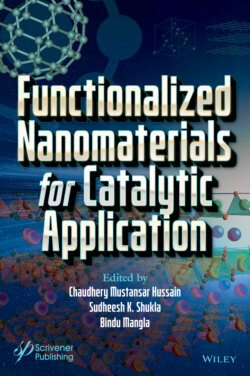Читать книгу Functionalized Nanomaterials for Catalytic Application - Группа авторов - Страница 26
1.5.3 Metal/Metal Oxide-Based FNMs as Photocatalysts
ОглавлениеMetal/Metal oxide when entrapped as FNMs, on photo-irradiation leads to photo-excitation of particles that undergoes transference between the CB and VB, where the CB transfers the e− to degrade the pollutant [181]. Components like (1) semiconductor, (2) metal, and (3) metal-supporters assist interfacial-interaction for photocatalytic degradative actions. In one of their reports, Park, S.J. et al., proved that T-ZnO-CNO FNMs with nano-onions prepared by green routes removed the challenging pollutant of water 2,4-DNP photocatalytically with an efficacy of ~92%. Conversion of O2 to ·O2− and formation of ·OH favored the degradation using 3D hybrid structures [182]. Degradation of phenol (63%) and MB (52%) at 420 nm (visible) by FNMs of Au/(WO3/TiO2) and WO3/TiO2 were noticed by Rhaman, Md. et al. [183]. Electron transference is retarded but hole movement is favored due to Au embedded on the surface of WO3/TiO2. Sufficient bandgap energies cause photocatalytic excitations. Flower-like functionalized Au-ZnO NMs hydrothermally were responsible contributors for photo-decomposition of Rh B into CO2 and H2O, with h+(holes) and ·OH formed by light radiations were functional for the activity. A total of 99% reduction in 10 min was noticed by authors Hussain, M. et al. [184].
